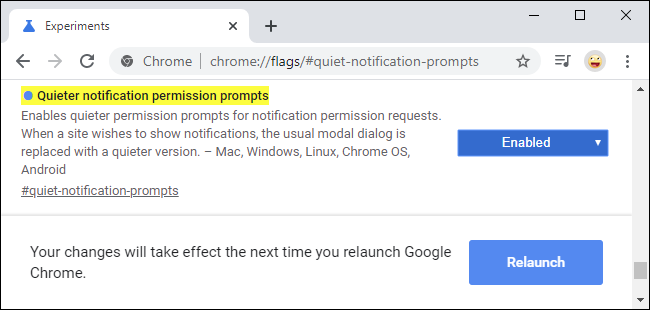“This website wants to show notifications!” It is the most annoying part of the web browsers for years. A well-intentioned feature was abused by many websites to hassle the users. Here’s how to silence annoying notification Popups in Web Browsers.

Now web browsers such as Mozilla Firefox and Google Chrome are cracking down these annoying notifications. In this guide, we are going to explain to you how to silence annoying notification Popups in different Web Browsers.
Why Did Browser Make These So Annoying?

Earlier notification capabilities were just part of making the web a better application platform. Web apps should be able to send you notifications about new messages and emails, in case you want them. Those notifications should arrive even if you have the web page closed.
Well, now web browsers presented these notification requests in a pretty annoying way. When you visit a website, even for just once to read an article—it could pop up a message that’s difficult to ignore.
Usually, more and more websites began adding notification requests. For example, such as a news website could push new articles to its subscribers via web browser notifications.
However, the problem is not the notification option itself. It is how pushy the notification request is and Web browsers should have cracked down on these popups years ago.
How To Silence Annoying Notification Popups
Mozilla Firefox

Mozilla Firefox was the first browser developer to crack down on these annoying notifications. The change came in Firefox 72 version, released on January 7, 2020.
Now, rather than a large request message that pops up as soon as you visit a website, you will just see a small speech bubble in the address bar to the left of the web page’s address. It will wiggle a bit while the web page loads.
However, you can still enable notifications for a website clicking the bubble and then tap on “Allow Notifications.” In case you don’t want to see the bubble wiggle then, you can tap on “Never Allow” instead—or head into Firefox’s options and disable notification requests entirely.
Either of the ways, you will not see pop-ups as soon as you open a web page. Mozilla announced it “discovered during testing that about 99% of notification prompts go unaccepted, while 48% gets actively denied by the user.”
Google Chrome

Google Browser is following suit in Google Chrome 80, which was released on February 4, 2020. This change won’t be enabled for everyone immediately, however, Google says it plans to automatically enable it for people who deny notifications over and over again.
To enable it manually, you can simply toggle the “Use quieter messaging” flag. To access this, plug chrome://flags/#quiet-notification-prompts into Chrome’s address bar and then press Enter.

Once you’ve done that then head to Chrome’s notification settings— tap on menu > Settings > Advanced > Site Settings > Notifications and enable “Use quieter messaging. It blocks notification prompts from interrupting you.

When this feature is enabled in Chrome, you will see a bell-shaped notification icon at the right side of Chrome’s Omnibox, also called as the address bar. Mouse over it and you’ll see the message “You usually block notifications. To let this site notify you, tap on here.
As in Mozilla Firefox, you can still enable notifications if you like. Websites just can’t repeatedly bother you with notification popups that interrupt you during web browsing.
Microsoft Edge
The latest version of Microsoft Edge is now based on the Chromium code that powers Google Chrome Browser. In other words, we can expect Microsoft Edge to limit web notifications in the same way Google Chrome Browser does.
Apple Safari
Apple has still not announced any plans to silence these annoying notification requests in the Safari web browser. But, you can still disable notification prompts in Safari’s settings. We will not be surprised if Apple followed suit and made this notification requests less annoying, too.
Update: Apple did make a change to Safari’s notification prompts back in 2019 however, it didn’t make them “quieter” in the same way Firefox and Chrome browser did.
Websites can’t really show push notification requests when a web page loads. They have to ask for notification permissions in response to user interaction on the page.
